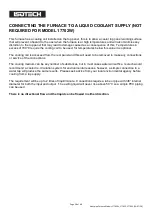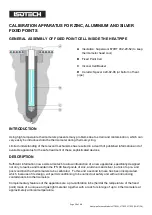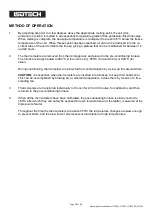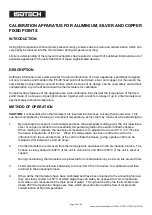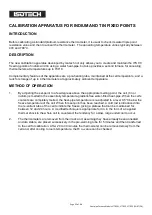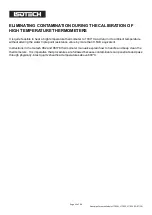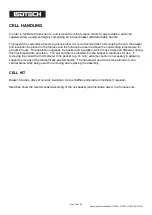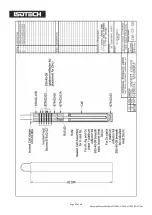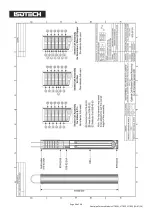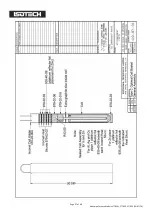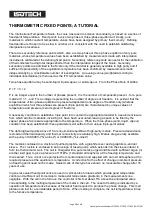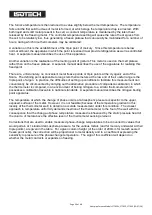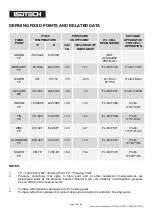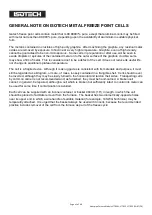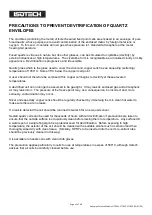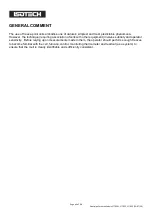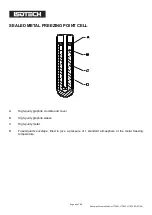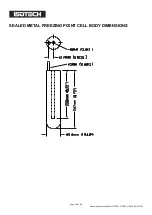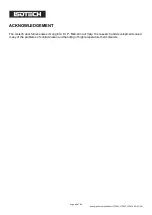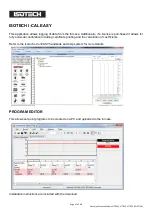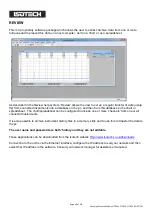
Page 42 of 48
Heatpipe Furnace Models 17702W, 17702P, 17702S (13
–
07/20)
PRECAUTIONS TO PREVENT DEVITRIFICATION OF QUARTZ
ENVELOPES
The crucibles (containing the metal) of Isotech sealed fixed point cells are encased in an envelope of pure
fused quartz, whose purpose is to avoid contamination of the enclosed metal, by foreign metal ions or
oxygen. To this end, it contains an inert gas whose pressure is 1 standard atmosphere at the metal
freezing temperature.
Fused quartz is vitreous in nature but, like other glasses, can be stimulated to crystallise (devitrify) by
external influences at high temperatures. The crystalline form is recognisable as a localised cloudy or milky
appearance. Devitrification is progressive and irreversible.
Quartz glass which is the glass used to cover the silver and copper cells has an annealing (softening)
temperature of 1050°C. Some 35°C below the copper melt point.
A user should not therefore be surprised if his copper cell begins to devitrify at these elevated
temperatures.
A devitrified cell can no longer be assumed to be gas-tight. It may leak its enclosed gas and atmospheric
air may leak into it. The pressure at the freeze point may, as a consequence, be incorrect and, more
seriously, contamination may occur.
Silver and especially copper cells should be regularly checked by immersing them in clean hot water to
make sure there are no leaks.
If a leak is detected the cell should be returned to Isotech for a new quartz cover.
Sealed quartz cells can be used for thousands of hours without devitrification if precautions are taken to
ensure that the outside surface is scrupulously clean before raising them to temperature. Any surface dirt,
a water spot or a single fingerprint is a potential seed for devitrification. Before exposing to high
temperature, the exterior of the cell should be cleaned with a suitable alcohol such as ethanol and then
thoroughly wiped dry with clean tissue. (Similarly,
SPRT’s to be inserted into the cell’s re-entrant tube
should be previously cleaned in this way).
It is advisable to handle cells with clean cloth gloves.
The precaution applies particularly to cells for use at temperatures in excess of 500°C, although Isotech
advises that all cells be carefully cleaned before use.

